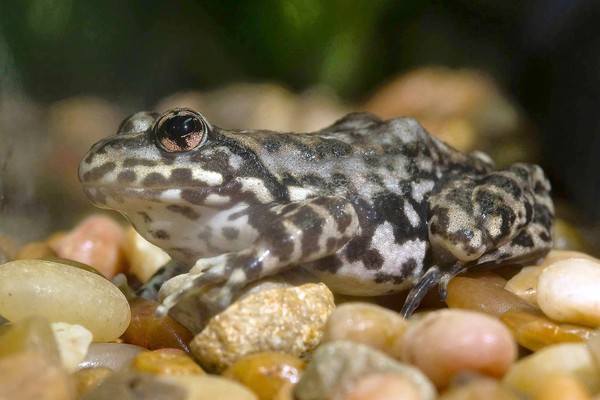
By Louis Sahagun
One of the nation's most ambitious wildlife reintroduction efforts has suffered a setback with the deaths of 104 mountain yellow-legged frogs that had been rescued from the fire-stripped San Gabriel Mountains in 2009, authorities said Tuesday.
The federally endange red frogs, which recently metamorphosed from the tadpole stage, died in captive breeding tanks over the last several weeks at the Fresno Chaffee Zoo.
"We have two frogs left. We're trying to determine exactly what happened," said Scott Barton, director of the zoo, which is highly regarded for amphibian husbandry. "We were thrown a curve ball with a species that was new to us. It's been a humbling experience."
Barton said the facility may "send these two frogs off to see if someone else will have better luck."
The zoos in Fresno, Los Angeles and San Diego are involved in a public-private effort to pave the way for the Rana muscosa population to reestablish residency in Southern California.
For thousands of years, mountain yellow-legged frogs thrived in hundreds of streams cascading down the San Bernardino, San Gabriel and San Jacinto mountains.
Since the 1960s, the species has been decimated by fires, mudslides, pesticides, fungal infections, loss of habitat and the appetites of nonnative trout, bullfrogs and crayfish.
Today, fewer than 200 are believed to exist in nine isolated wild populations, including a group in the San Gabriel Mountains' Devils Canyon that survived the devastating Station fire.
According to U.S. Geological Survey ecologist Adam Backlin, a lead scientist in the recovery effort, "saving the mountain yellow-legged frog from extinction is turning out to be more difficult than anyone anticipated."
The Fresno zoo is not the only facility to have run into problems while trying to spur a jump in the population of the 3-inch amphibians.
Thirty-six tadpoles have not been seen since biologists at the San Diego Zoo's Institute for Conservation Research released them a year ago into a remote San Jacinto Mountain stream from which they had been absent for a decade, zoo officials said.
In 2006, seven mountain yellow-legged frogs — found three years earlier in a shallow pool in the San Bernardino Mountains after a large brush fire — died at the San Diego Zoo. Studies showed those frogs died of the same type of fungal infection that is killing frogs around the world.
The species' minuscule scattered population gives mountain yellow-legged frogs the distinction of being one of the most endangered amphibians on the planet.
"These frogs are very specific in their requirements. What works for one group may not work for another, which is why we have three zoos involved," Backlin said. "The problem is that zoos do not have the space, staff or the funds to keep many of these frogs, which need … almost constant attention.
"This program is still in its infancy," Backlin said. "I have high hopes."
Article courtesy of latimes.com

